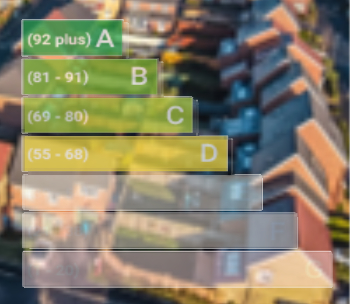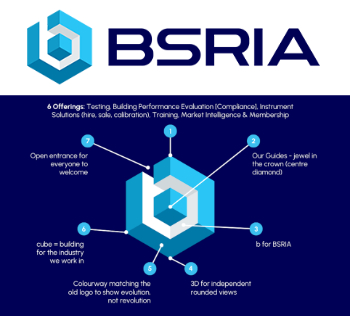The impact of automatic sprinklers on building design
The Impact of Automatic Sprinklers on Building Design: A fire engineering review, is an independent report produced by WSP, sponsored by the Business Sprinkler Alliance (BSA). It was published in September 2017.
The report aims to raise awareness of the beneficial impact of automatic sprinkler systems, and provides those involved in the design and construction supply chain with useful information about design implications. It gives the reader an appreciation of whether the inclusion of automatic sprinklers for a particular scheme is worthy of further consideration.
Automatic sprinkler systems extinguish or control fires by discharging water locally. Sprinkler systems consists of water supply (tank, pump and valves) and sprinkler installation (pipes and heads). Detection is handled mechanically by heat sensitive elements that can be constructed from soldered links or glass bulbs containing oil based liquids. The thermal element holds in place a plug which prevents water from flowing from the sprinkler head. The thermal elements respond to localised heating which releases the plug and allows water to flow.
Key facts about operation include:
- Automatic sprinklers will typically only operate in areas where fire is present allowing adjacent rooms or areas to remain unaffected.
- Discharge in the presence of fire is extremely reliable (98 to 99.8%) and discharge in the absence of fire is rare.
- Sprinklers have an 80-95% probability of being successful.
- Generally cost and design complexity increases with fire risk.
- Systems can be designed to conceal pipes, and the availability of decorative sprinkler heads allows them to be matched with the interior of the space.
The installation of an automatic sprinkler system can reduce the risk to life and the degree of damage caused in a fire event. As a result, it may be possible to reduce other fire protection measures.
The report focuses on the commercial and design impacts of automatic sprinklers rather than fire safety, exploring the ways automatic sprinklers can add value to building design, including:
- Net capital cost savings.
- Increasing the net internal area / building efficiency.
- Improving design flexibility and creating architectural freedom.
- Reducing the construction programme and/or simplifying site works.
Automatic sprinklers can permit:
- Larger compartment sizes.
- Reduced structural fire protection requirements.
- Increased travel distances leading to possible design freedoms such as the removal of stairs.
- Reduction in fire-fighting shafts.
- Reduced circulation areas leading to increased useable area.
The report supports the view that automatic sprinklers should be considered early in the design process and dispels myths about cost and design freedom. It provides an introduction to sprinklers, an overview of design and operation, and considers areas of design impact, fire protection costs and commercial applications for offices.
The first section of the report discusses concessions allowed by standard fire safety guidance for a variety of building types if automatic sprinklers are incorporated. The second section provides a review of office building types and key objectives relevant to them.
[edit] Related articles on Designing Buildings
- Automatic fire sprinkler.
- Automatic fire sprinkler systems: A good practice guide.
- Business Sprinkler Alliance.
- Case study A for offices to show where automatic sprinklers have the greatest impact.
- Case study B for offices to show where automatic sprinklers have the greatest impact.
- Costs of water automatic sprinkler systems.
- Design benefits of automatic sprinkler systems granted under approved document B.
- Drenchers.
- Fire detection and alarm system.
- Fire detector.
- Fire in buildings.
- Fire protection engineering.
- Fire safety design.
- Making the case for sprinklers and dispelling myths.
- Overview of automatic sprinkler system design and operation.
- Sprinkler head.
- Sprinklers.
- Sprinkler systems explained: A guide to sprinkler installation standards and rules.
- The cost efficiency of different combinations of fire protection measures.
- Watermist systems for fire protection in domestic and residential buildings DG 534.
Featured articles and news
Spring Statement 2025 with reactions from industry
Confirming previously announced funding, and welfare changes amid adjusted growth forecast.
Scottish Government responds to Grenfell report
As fund for unsafe cladding assessments is launched.
CLC and BSR process map for HRB approvals
One of the initial outputs of their weekly BSR meetings.
Architects Academy at an insulation manufacturing facility
Programme of technical engagement for aspiring designers.
Building Safety Levy technical consultation response
Details of the planned levy now due in 2026.
Great British Energy install solar on school and NHS sites
200 schools and 200 NHS sites to get solar systems, as first project of the newly formed government initiative.
600 million for 60,000 more skilled construction workers
Announced by Treasury ahead of the Spring Statement.
The restoration of the novelist’s birthplace in Eastwood.
Life Critical Fire Safety External Wall System LCFS EWS
Breaking down what is meant by this now often used term.
PAC report on the Remediation of Dangerous Cladding
Recommendations on workforce, transparency, support, insurance, funding, fraud and mismanagement.
New towns, expanded settlements and housing delivery
Modular inquiry asks if new towns and expanded settlements are an effective means of delivering housing.
Building Engineering Business Survey Q1 2025
Survey shows growth remains flat as skill shortages and volatile pricing persist.
Construction contract awards remain buoyant
Infrastructure up but residential struggles.
Warm Homes Plan and existing energy bill support policies
Breaking down what existing policies are and what they do.
A dynamic brand built for impact stitched into BSRIA’s building fabric.























